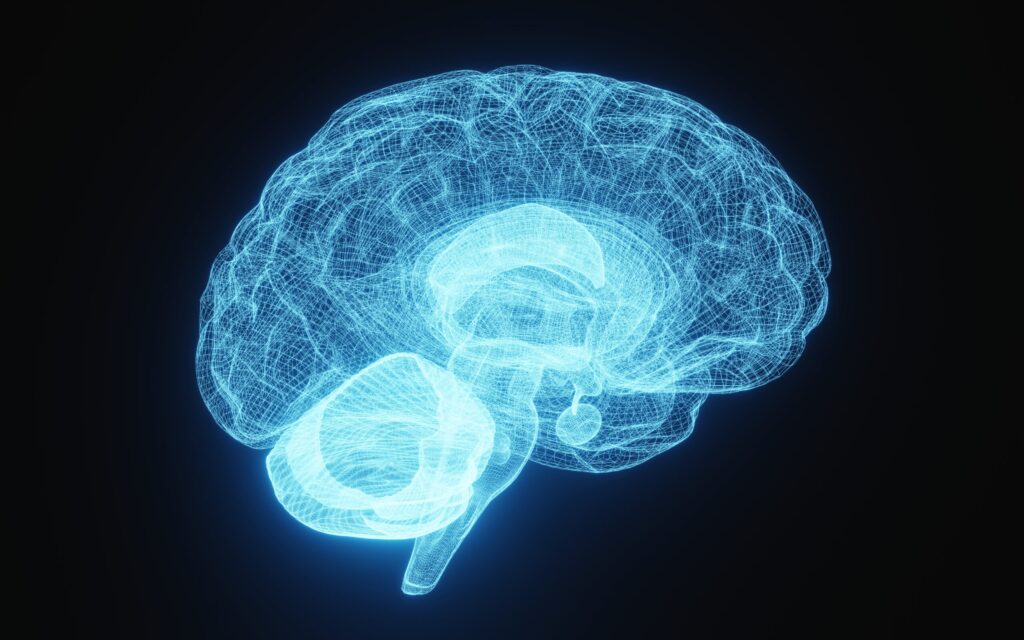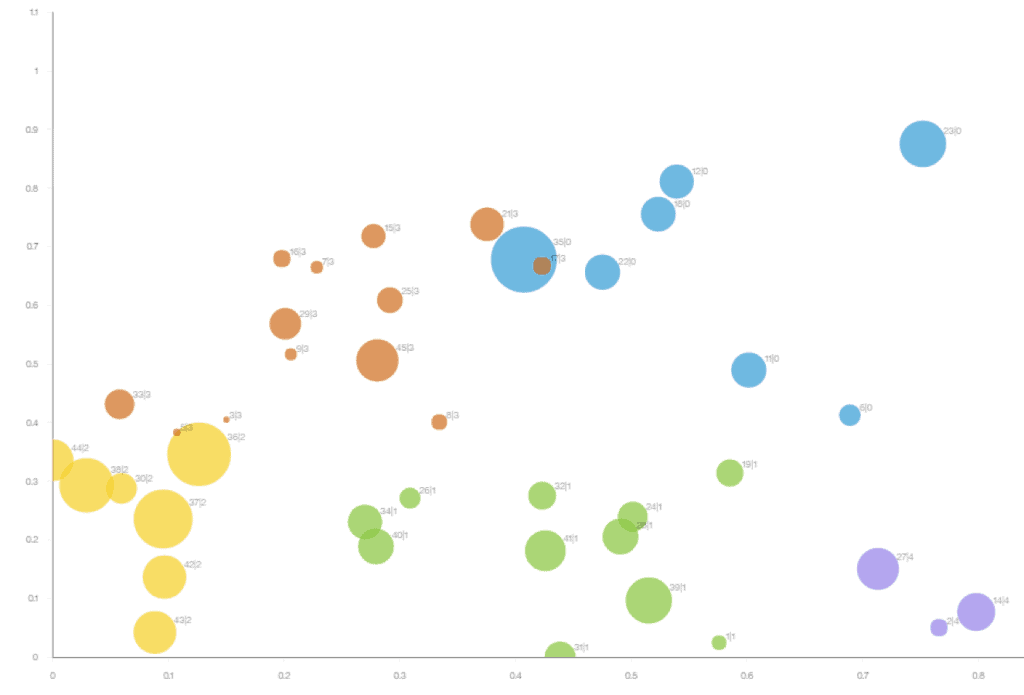
Data Science Advisory
Do you want to innovate or solve problems using data science in your organization and don’t know how? Use our step-by-step instructions.
In this immersion, we are focused on understanding your business. We seek to highlight your goals and the dominant factors that drive value creation for your stakeholders. We also seek to understand the main lines of your financial statements and what are the drivers that influence them. In addition, we briefly analyze the organization’s current knowledge of data science.
- Business: we learn about the operations of your business to identify real economic/financial benefits of every listed opportunity. In addition, we identify the complexity and effort of every challenge in the process, structure and people dimensions;
- Technology: in addition to the business dimension above, we identify the complexity of technological changes in infrastructure, architecture and applications which are required to address every mapped business challenge;
- Data science: finally, we identify data, data availability, quality, volume, and the organizational experience to seize every opportunity.
As a result, we generate an opportunity map with an evaluation of effort (x axis), impact (y axis) and investment (size) in different areas of the organization (color):

Every opportunity will be detailed in an opportunity form – for example:
Initiative: Change the Demand Forecasting Methodology
Objective: Change from a bottom-up approach to a top-down forecasting methodology, based on the historical breakdown by color-category.
Dysfunctions:
- Bottom-up methodologies ‘inflate’ the forecast;
- There is no time to adjust the forecast;
- Forecast is not evaluated in revenue.
Opportunities:
- Reduce forecast bias with an approach that combines bottom-up and top-down methodologies;
- Include verification of marketing revenue consistency.
Qualitative gains:
- Improved vertical integration through a single plan for volume and revenue.
Expected results:
- Reduction of forecast bias.
Follow-up
After completing this step, we can participate in the company’s data science evolution process in different ways:
Creation of an evolution structure
We have developed a management system with processes, structure, roles and responsibilities, topics, dynamics of action, and regular forums in which we can act as facilitators or external advisors for organizational transformation, data science and technology. In this structure, we ensure proper deployment of the initiatives planned in the program, reducing risks and accelerating value creation.
Training – project management for digital transformation
We can structure and train project leaders and teams on different methodologies, such as: project management using data science, design thinking, rapid prototyping or other methodologies for creative problem solving. In addition, we talk about cross-functional group facilitation techniques to ensure the highest probability of success for each individual project.
Different types of initiatives may result from our Advisory service, such as:
- Natural language processing: from creating bots for automated chat interfaces to voice interaction with consumers, natural language processing efficiently reduces friction between the organization and consumers. In addition, automated document analysis applications, combined with automatic classification and machine learning, can automate processes with a large number of unstructured documents, such as supplier evaluation, score processing, candidate resume review, legal proceedings, etc.
- Sentiment analysis: in times of social media and online product evaluation, reacting in a timely manner to reviews, criticisms or suggestions can make the difference between a reputable and a rejected brand. Sentiment analysis helps screen and qualify reviews, texts, criticisms in large masses, increasing productivity of this process.
- Big data: people continuously connected via cell phone or IoT sensors generate large amounts of data that can only be analyzed with new processing technologies known as big data. Examples of applications are route optimization via vehicle telemetry or predictive maintenance via machine telemetry.
- Predictive models: we can say every organizational decision is based on explicit or implicit forecasts. One of the most prolific areas of data science and machine learning application is forecasting. Using large amounts of data, this approach helps identify complex patterns, thus reducing errors and enabling better decisions. Applications include demand/sales forecasting, default forecasting, and consumer behavior.
- Simulation: in an unstable economy, simulation allows organizations to prepare for different contexts. Applications include Monte Carlo simulation for financial risk estimation, discrete event simulation for production or logistics flows, system dynamics simulation applied to innovation dynamics, or multi-agent simulation for market simulation.
- Optimization: decisions are often made to minimize cost, maximize revenue or results or service level, respecting operational restrictions. In these situation, linear, non-linear, integer and mixed programming models are traditionally used in production, distribution and inventory plans. They can also be combined with predictive models to optimize revenue drivers, resulting in optimal portfolio attributes or optimal mix of price and promotions.
- Machine learning and deep learning: with applications mainly in image and voice recognition, deep learning algorithms can be used, for example, in consumer identification and classification and automatic identification of faults or credit risk.
Through the evolution cycle in data science, different issues can be solved to generate revenue and reduce risks or costs. Some of these solutions are described below:
- Descriptive solutions: these solutions help the organization describe its reality more efficiently. In a world that produces huge amounts of data, identifying the actual business situation with a focus on the end customer is a great challenge. For instance, descriptive models automatically identify stores, consumers, regions, or products whose behavior has changed and deserve organizational actions. In addition, modern descriptive models are able to track consumer behavior on the internet and social media, adjusting the main organizational focus and classifying potential consumers regarding their future behavior (default risk).
- Diagnostic solutions: once potential problems or abnormal situations are identified, these automatic diagnostic solutions, based on correlation techniques, help identify the reasons and causes of the situation. Examples involve automated identification of reasons for an unusual sale, high costs, or lower efficiency.
- Predictive solutions: once the reasons are understood, decisions may require a vision of the organization’s potential future scenarios. For this situation, predictive solutions based on machine learning can help predict possible organizational future scenarios from a set of variables. The main applications of these solutions involve market intelligence, demand forecasting, predictive maintenance, and product recommendations for consumers.
- Prescriptive solutions: after scenarios are assembled, decisions must be made to optimize results. That’s where simulation and optimization solutions are used, suggesting the most appropriate decisions for the situation and context. Examples of these solutions involve optimization of the marketing mix, optimization of production, inventories and the logistics network.
- Planning solutions: with a set of scenarios and decisions in hand, it’s important to understand the financial impact on the organizational results. It requires an integration of all solutions described above using the organizational planning solution, closing the decision-making cycle, which can maximize results and minimize risks.
- Innovations: besides the solutions above, you can use data science and add features of value for the customer regarding the organization’s products or services. In addition to the technological platform, our lab innovation methodology can be applied. Examples of innovation involve adding cognitive intelligence, such as new forms of interaction between the consumer and your product, image recognition, etc.
Talk to CTI Global to innovate and solve problems using Data Science: